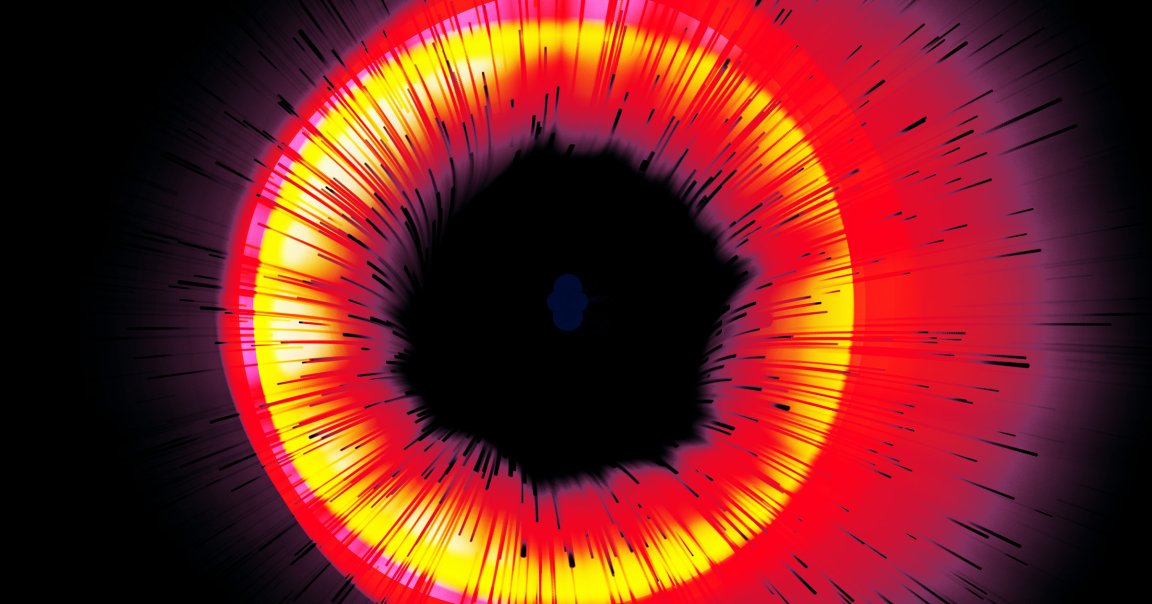
This summer, astronomers detected a gamma ray burst (GRB) so powerful that they’re still struggling to explain what caused it. These cosmic explosions are typically produced by stars dying in a spectacular supernova, unleashing in moments as much energy as the Sun will over its entire lifetime.
But this new one, dubbed GRB 250702B, blows everything we know about these fearsome blasts out the water. For starters, it lasted a staggering seven hours, which is vastly longer than they typically do. And it also appeared to repeat several times over its run, which shouldn’t be possible. A GRB is produced by the total obliteration of a star, so how could the same source emit multiple blasts?
A wealth of theories have been put forward ever since the detection. But a new one, published in a study slated to be submitted to the journal Monthly Notices of the Royal Astronomical Society, may be the most terrifying yet.
In an inversion of the well known scenario of a black hole devouring a star, the researchers propose that a star actually swallowed a black hole. Once subsumed, the massive infiltrator begins to rip apart the star’s core, then devour the rest of its host from the inside out, producing an incredibly energetic stream of particles called a jet.
“It’s a GRB-like phenomenon, but it allows for the longer time scale,” Daniel Perley, an astrophysicist from the UK’s John Moores University who was not involved in the study, told Science.
Death by black hole is not an unusual fate for a star. The most well known form are tidal disruption events, which occur when a star wanders too close to a supermassive black hole that weighs millions if not billions of solar masses and are often found in the heart of a galaxy. The object’s ungodly gravity shreds the star down into a stream of material as it floats closer. Instead of immediately getting consumed, the spaghettified star dust gets pulled into a swirling disk around the black hole, like water circling a drain, emitting huge amounts of energy.
This latest theory theory to explain GRB 250702B flips the idea on its head in a few ways. Instead of a supermassive black hole, it’s a stellar mass black hole — or a modest-sized black hole that forms from the implosion of a star — which is orbiting another star that’s burned through all its fuel. This moribund star begins to puff out, creating an envelope that’s dwarfs its original size. This tugs on the black hole, causing it to gradually fall into the star’s core. From there, the black hole rips the star apart, creating the lengthy jets that appear to us like a GRB.
“The argument posed in this paper is a very compelling one,” Hendrik van Eerten at the University of Bath in the UK told New Scientist.
The GRB was first detected by NASA’s Fermi Gamma-ray Space Telescope on July 2, appearing as three distinctive bursts. Follow up observations proved that the source was coming from well outside our galaxy, up to billions of light years away, ruling out the possibility that it only appeared so powerful because of its proximity.
Other explanations researchers are considering include a star collapsing under its own weight, or perhaps a tidal disruption event involving an intermediate mass black hole. All of them have glaring issues, though — so the mystery continues to eat astronomers up inside.
More on space: Astronomers Detect Mysterious Dark Object in Distant Galaxy